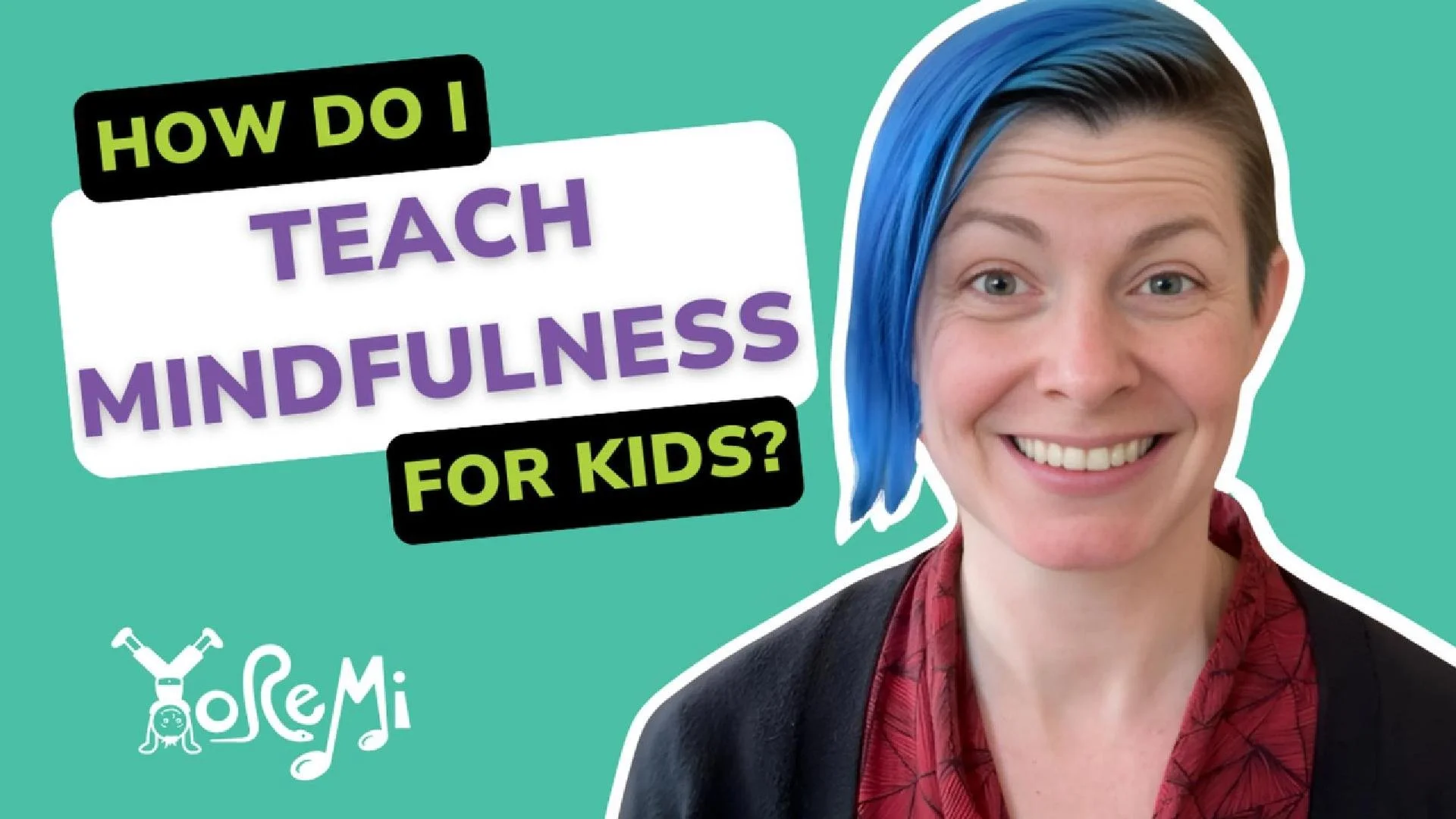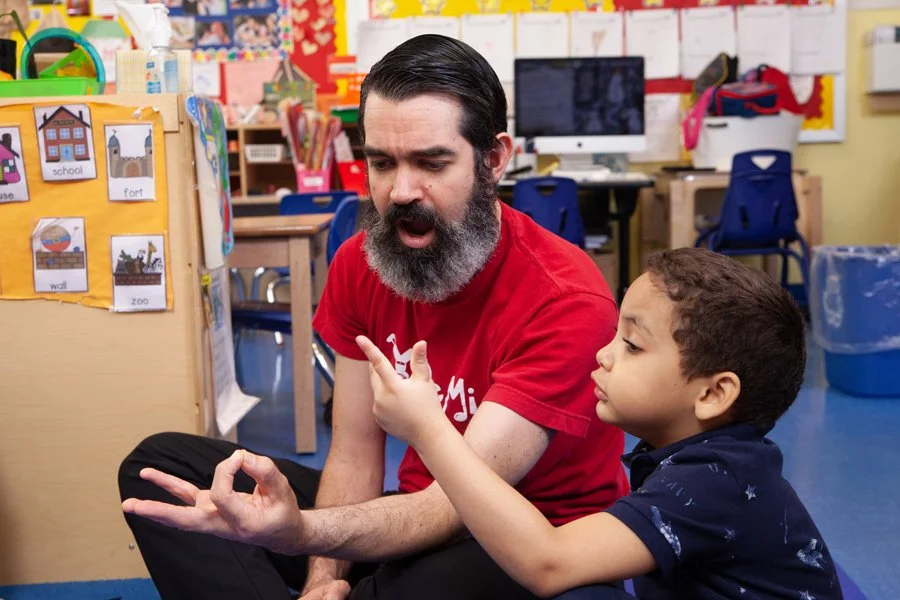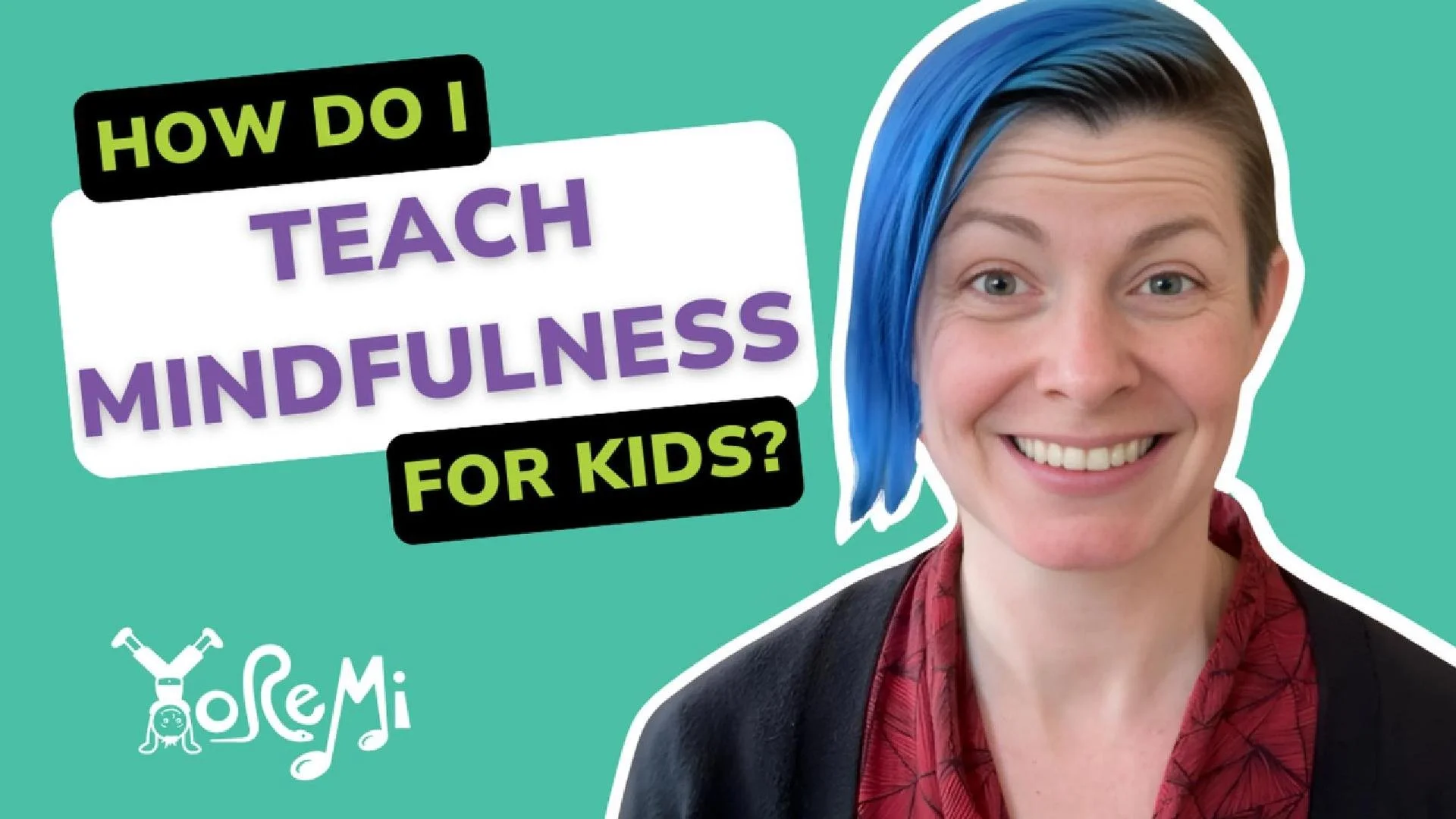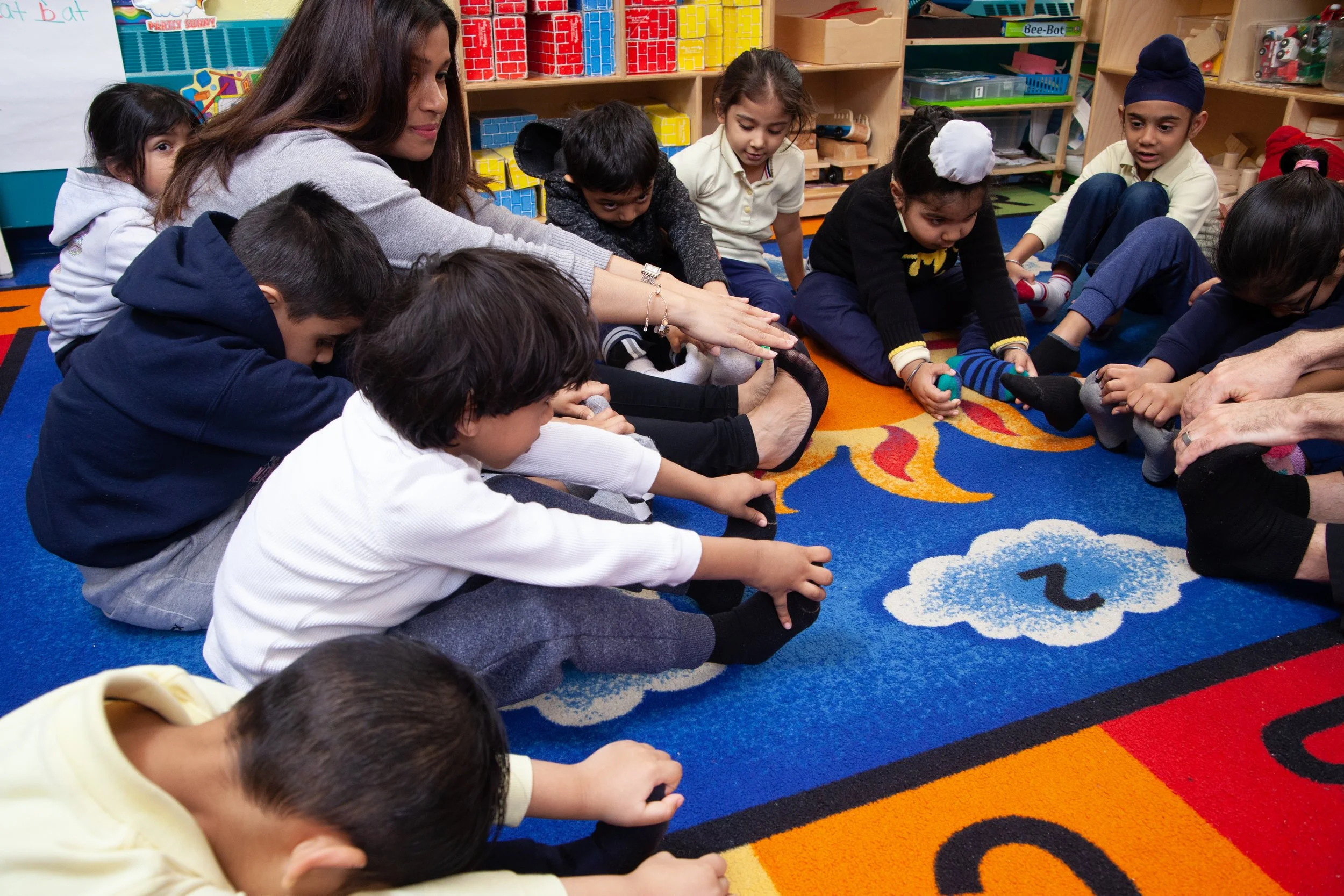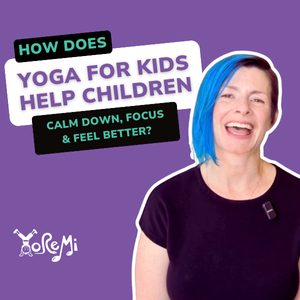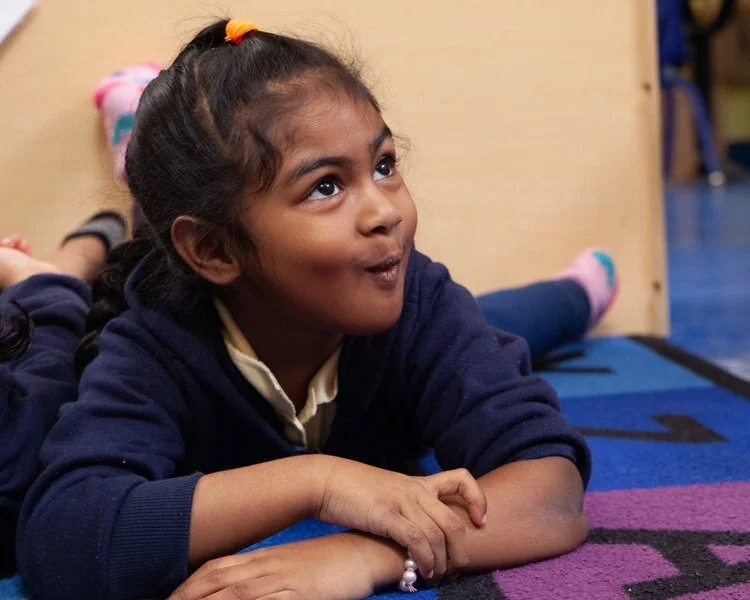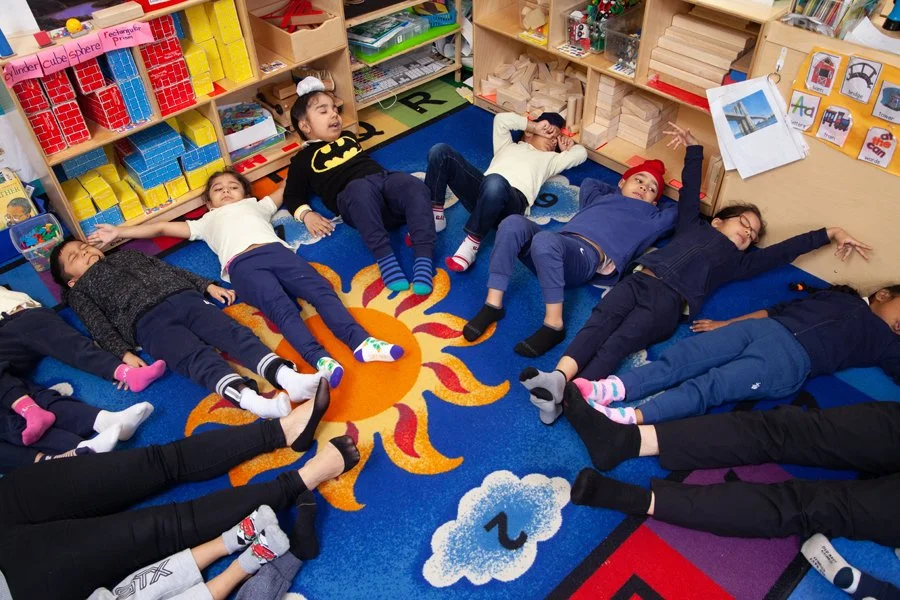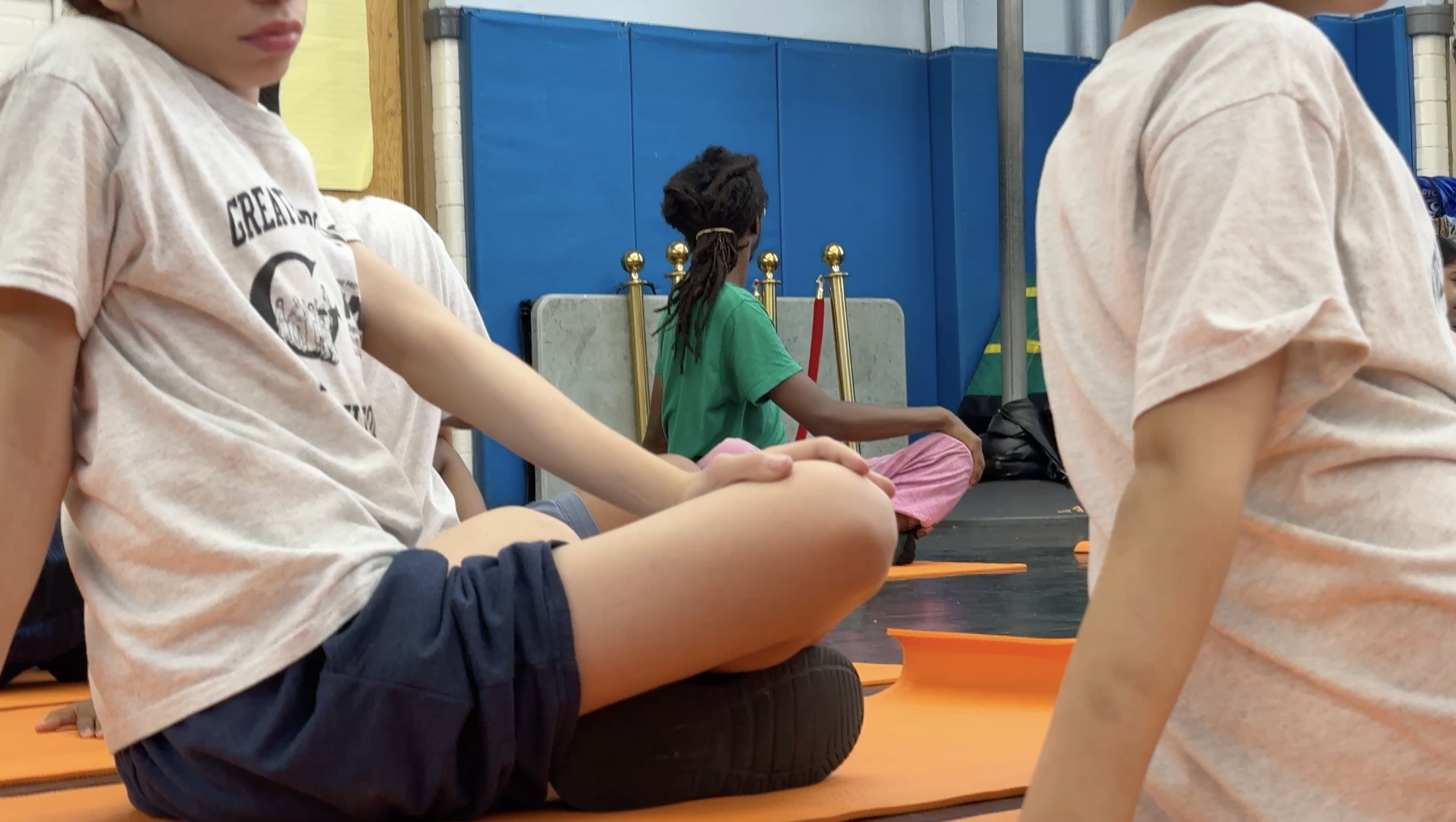How Do I Teach Mindfulness for Kids? A 4-Step Guide for Educators
TLDR: Teaching mindfulness to kids can be simple, joyful, and impactful. Use four accessible steps — noticing, breathing, affirmations, and reflection — to build focus, compassion, and emotional regulation in your classroom. These playful practices support social-emotional growth and create calm, connected learning environments.
“What is mindfulness?” I asked my second graders. Instantly, a few sat cross-legged, pinched thumb to pointer finger, and closed their eyes.
Others raised their hand and shouted out things like peace and calm. It’s amazing that this word holds so much meaning for kids these days. When I was in 2nd grade, I didn’t have a clue!
But newsflash…mindfulness doesn’t have to mean sitting still with eyes closed. In fact, for many children, the most powerful mindfulness experiences come through movement, breath, and imagination.
If you’re ready to explore mindfulness with your kids but unsure where to begin, these four simple steps can help you get started. They’re approachable, flexible, and designed to support social-emotional development while strengthening focus, compassion, and connection.
Want a video version of this blog? Click here to watch on YouTube!
How to Teach Mindfulness For Kids - in Four Steps
These easy-to-follow steps will launch you on your Kids Yoga journey from wherever you are!
1. Start with Noticing: Build Present-Moment Awareness
Before we can guide students to calm, we first guide them to notice. Mindfulness for kids (and adults) begins with simple awareness: noticing your feet on the floor, the temperature of the air, or the way the light enters the room. It’s the non-judgmental act of paying attention - not fixing, not changing.
Try listening to a chime or bell or gazing out a window. These sensory awareness practices can help harness awareness, reduce stress and increase focus in even the busiest classrooms.
You might ask:
“How long can you hear the sound of the chime?”
“Can you feel your socks on your toes?”
“What’s can you see that’s farthest away? What can you see that’s close.”
These gentle prompts invite students to become present. Even if they’re not quiet or still, they’re practicing mindfulness. There’s no right or wrong. Noticing is enough.
2. Practice Mindful Breathing with Visuals and Imagery
Mindful breathing is simply noticing our breath. It’s not about changing it or doing it “right.” We just practice becoming aware of it, which most of us usually aren’t unless something goes wrong.
For children, this can be especially powerful when paired with visuals, storytelling, or tactile tools.
We love to use simple, engaging props like:
🌀 A breathing ball (Hoberman sphere) to demonstrate expansion and contraction of our lungs. Video here
🪶 Feather blowing to guide children in modulating the speed and intensity of their breath.
Spark children’s imagination by using visual or aural references like Dragon Breathing (video below), roaring like lions, or breathing like wind whistling through trees.
You might say:
“Let’s breathe like a dragon - in through your nose and fire out of your mouth!”
“Let’s make the sound of wind rushing through our leaves!”
Breathing becomes an adventure and a tool, not a command. And the more often children practice this kind of breath awareness, the more likely they’ll return to it when they’re feeling overwhelmed, upset, or anxious.
Try This: Dragon Breathing
Sit cross legged or kneeling with your spine long.
Breathe in through your nose.
Breathe out through your mouth whispering a roar.
Option to stick out your tongue and open your eyes and mouth wide.
Repeat 3–5 times, encouraging children to make the breath longer and slower each round.
Learn more about the benefits of Dragon Breathing along with fun variations!
3. Use Affirmations to Build Inner Strength
Affirmations are small phrases with big power. A daily “I AM…” or “WE CAN…” statement can become an emotional anchor for students. Just like mindful breathing, when practiced consistently, affirmations show up when they’re needed most.
Examples:
“I am bigger than my anxiety.”
“We can take a deep breath together.”
Practice along with our I Am Calm Now activity video, which demonstrates how even a four-word phrase can become a sensory activity as we tap the tip of a finger to our thumb as we say each word.
One of our favorite ways to bring affirmations into kids yoga practice is to combine them with gross motor movements. By combining positive statements with corresponding yoga poses, we create a lasting impact on the entire system.
Try This: Affirmation Yoga Flow
This activity combines yoga power-poses with positive affirmations to build confidence and self-esteem.
As you move through the poses, say each affirmation out loud along with Rachel.
Feel free to modify any of the movements or statements to align with your group.
Complete your affirmation yoga practice with this Affirmation Relaxation to help kids further internalize these powerful positive statements.
4. End with Rest and Reflection
Mindfulness for kids isn’t just for beginnings. Closing the practice or the day with quiet rest and reflection helps children process their experiences and strengthens self-awareness.
You might invite students to journal, draw, or talk about:
What’s one thing that went well today?
What’s something you wish had gone differently?
What intention can you set for tomorrow?
Whether it’s a guided relaxation, solo journaling, or a few minutes of group reflection, creating space to pause is a gift we all need, children and teachers alike.
Try This: Star Relaxation
Star Relaxation is a guided body scan combined with breathing exercises and Star Pose.
This mindfulness for kids practice invites us stretch our bodies, quiet our minds, and connect with our breath…all while encouraging reflection and self-awareness.
Mindfulness is not something we “achieve.” It’s something we practice again and again, together.
Whether through music, breath, movement, or language, you’re creating a safe, joyful space for your students to be present with themselves and one another. That, more than anything, is the heart of mindful teaching.
If you’re feeling inspired and want more kids yoga tools, it might be time to take a training.
Our Yo Re Mi Children’s Yoga Teacher Certification is designed for educators like you. You’ll learn how to integrate music, movement, mindfulness, and social-emotional learning in a joyful, inclusive, and creative way.
Everything you need to confidently teach kids yoga and mindfulness is right here, ready for you!
We’re here to help. Visit our Free Resources for classroom-ready yoga videos, resources, and inspiration and take the next step on your journey with us.
READ NEXT: More mindfulness for kids resources
Save this article for later and don’t forget to check out our YouTube channel for children’s musical yoga and mindfulness videos.
FAQ: How do I teach mindfulness to kids?
Start with noticing — helping kids become aware of sounds, sensations, and surroundings. Then add breathing exercises, affirmations, and moments of rest or reflection. These tools build self-awareness and emotional regulation in a joyful, age-appropriate way.

